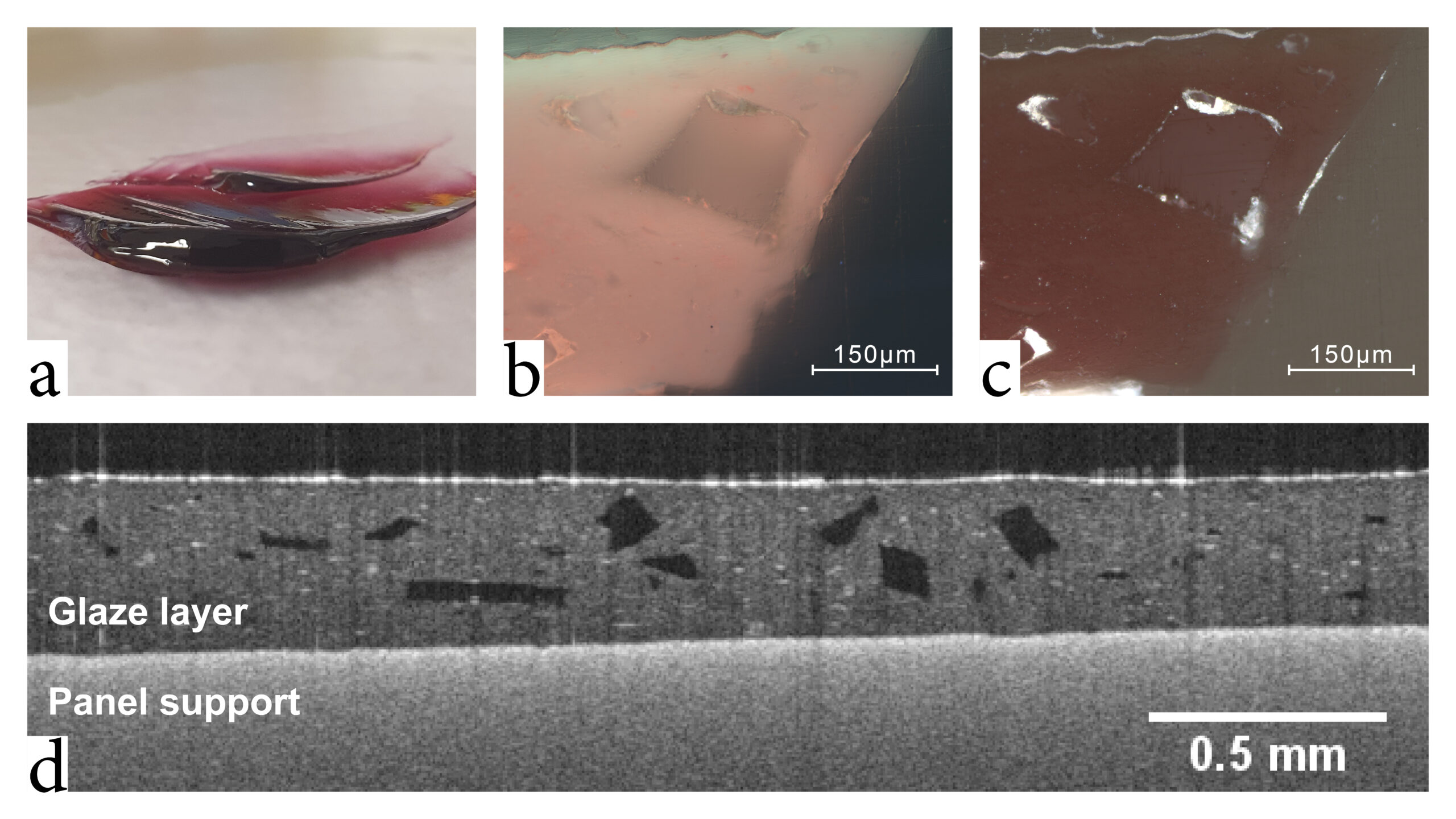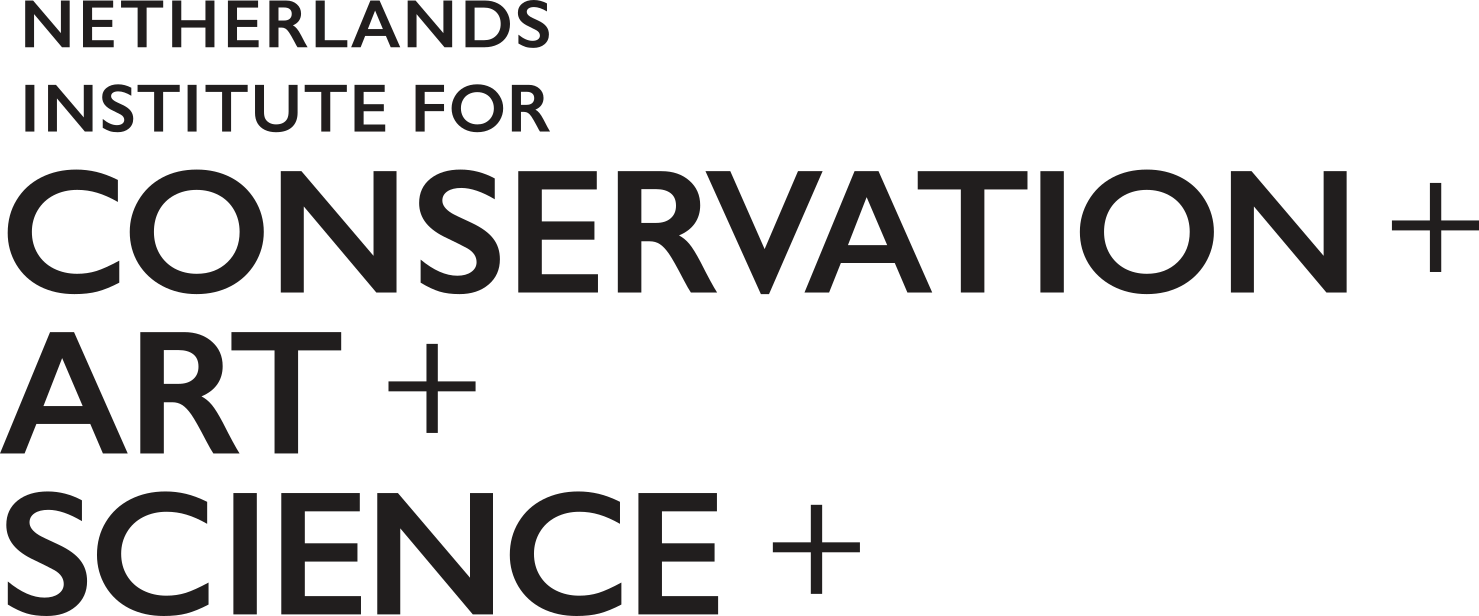2022 is the UN International Year of Glass. Therefore, it is all the more interesting to be currently looking at the variety of properties and uses the material has, one of which is as an additive to paint mixtures!
The NICAS Imaging, Identification and Interpretation of Glass in Paint (I3GlassP) project and the connected relating structure and colour of glass-based paints small grant project have reached their culminating stage. To investigate the effect and properties of glass-containing paints, an extensive reference set of reconstructions with red lake, verdigris, and smalt, bound in various linseed oils has been made. While the blue pigment smalt is a glass itself – coloured blue by the addition of cobalt in its matrix – the reconstructions of red lake and verdigris paints were based on both textual and material evidence pointing towards the addition of ground glass to the paint.
Video showing the steps in reconstructing a glass-containing verdigris paint in linseed oil, with OCT analysis at the end.
The physical properties of the paint-outs and pigments were investigated using Optical Coherence Tomography (OCT) and hyperspectral imaging at the Amsterdam UMC. Using this data, a light transport model will be created to predict the optical effect of the addition of glass. Other microscopic methods on cross-sections of the reconstructions will be used to confirm the findings of non-invasive techniques.
The results will be interpreted in the coming months, to shed light on the artist’s motivation behind the addition of ground glass to complex pigment mixtures.

Glass-containing red lake paint in boiled linseed oil. (a) Final paint, after x minutes of grinding; (b) Micrograph under 200x magnification with UV illumination (385nm); (c) Micrograph under 200x magnification with brightfield illumination; (d) OCT cross-section, in which the glass particles appear dark, as there is no scattering within the glass particles.
Text and video by Paul van Laar
